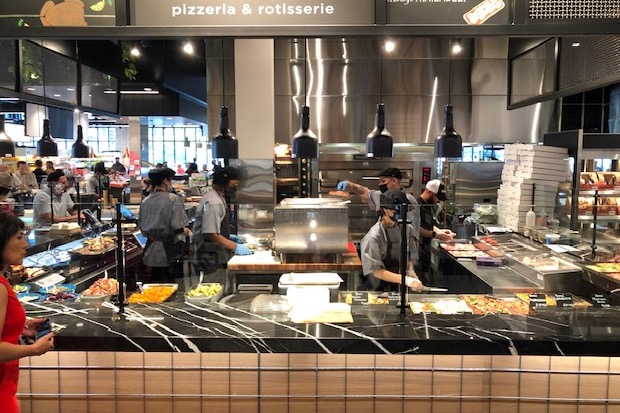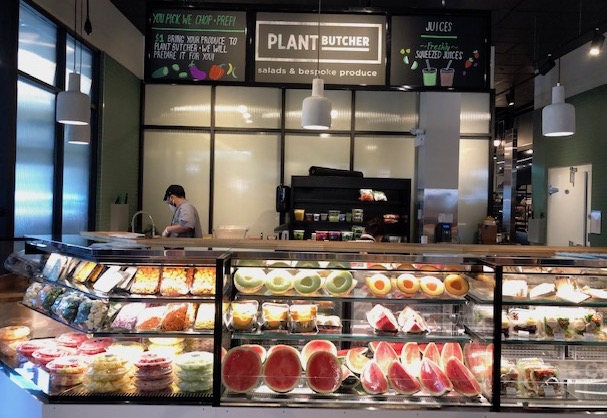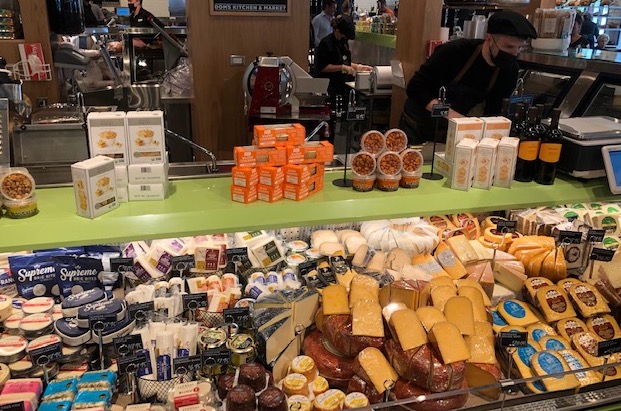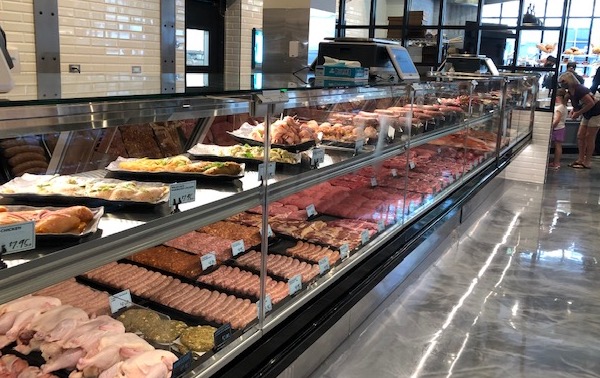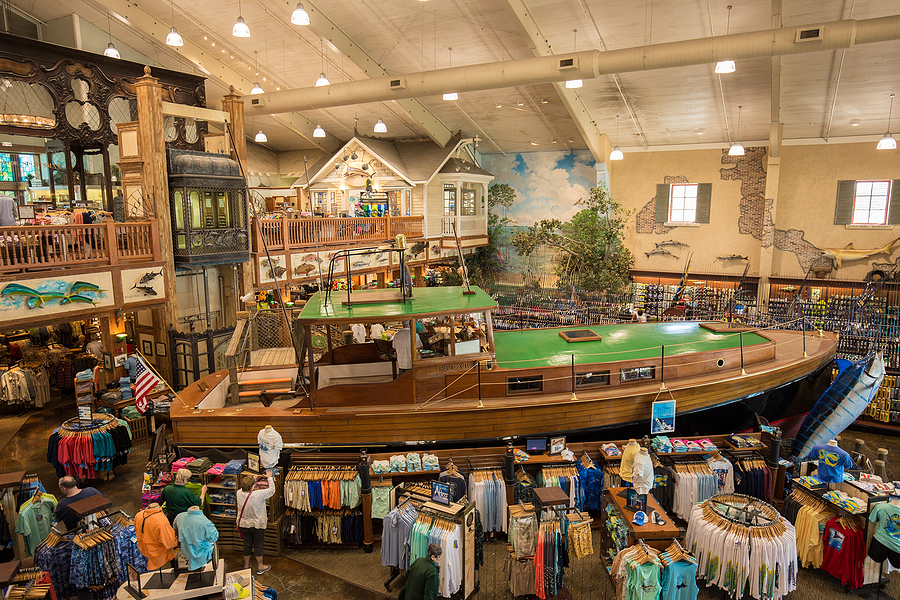
Rethinking Retail Strategy for Relevance and Resonance
May 7th, 2024 Posted by Emergent brand advocacy, Brand Beliefs, Brand Design, Brand differentiation, Brand Soul, Brand trust, Retail brand building, retail brand relevance, Retail Mission, Uncategorized 0 comments on “Rethinking Retail Strategy for Relevance and Resonance”Welcome to dangers of the Replacement Economy
Dear readers,
Our last post, “Your Brand’s Soul is the Engine of Competitive Advantage”was happily the most popular Emerging Trends Report’s article we’ve published in more than a decade of covering marketing, emerging trends and communications best practices. Perhaps the topic resonated because it is such a lynchpin to sustainable business growth, yet so often a neglected and under-developed foundation within the strategic brand-building toolkit.
Today, we continue that story by turning the page to speak to retail brands about an enormous shift in the retail landscape that creates tension, subtraction and balance sheet challenges. Much of our narrative hangs on a rethinking of how retail businesses should strategically curate their operations. This insight entails a liberal dose of soul surrounding the heart of how retailers create and deploy the shopping environment and fulfill their retail brand mission.
What’s also at stake here for CPG brands is a tangible concern. These retail houses of distribution can help you synergistically tell your story or they may end up being complicit in furthering commoditization conditions that every business wrestles with every day. Thus, it’s vital we take this up as an extension of what we started on the merits of brand soul investment.
A change in the retail universe that prompts re-evaluation, re-stage and new strategy
What happens when literally everything you consume can be had (or replaced) efficiently and cost-effectively without ever visiting a store? The historic retail paradigm of location, convenience, assortment and price dilutes alongside the ease and economy of the endless, digital shelf.
If we’re being painfully honest, I think we can agree the ever-widening, transformational impact of this business challenge is not surprising since so many retail channels demonstrate a woeful absence of sufficient surprise and delight.
You can usually assess what a retailer’s business model and strategy consists of just by observing how people behave when they enter. Are they happy, hovering, lingering and investigating? Or are they in a hurry to find whatever is on their list and get out. For the most part, you will see people moving quickly and with purpose to hit their needs and leave. That’s not just “pressed for time” happening – it’s also due to an absence of magic, emotion, joy and adventure (dare we say authentic soul) once inside the front door.
Let’s start with what people really want
Consumers look to brands and retailers to provide ideas, inspiration and solutions about how to live better and achieve their dreams. They yearn for deeper meaning while residing in a world that’s losing its grip on purpose and values. This is far beyond just the array of products you shelve. Yet most retailers believe they are in the stocking and selling business.
What’s more, for the most coveted consumers who are highly active in a consumption domain, these ‘heavy users’ are highly likely to fuss over and chase very high standards of experience and meaning-seeking. Are they being properly served?
Shoppers who are highly involved brand fans and self-identified experts can be found in many product and lifestyle categories, including:
Food
Wine
Pets
Dating
Travel
Outdoor
Cars
Fashion
Cosmetics
But what do they really get when shopping a retail footprint? The typical store environment is in danger of becoming a well-lit inventory “warehouse” – one that serves as a category specific shelfing farm only to facilitate quick selection and fast transactions. Take note, this sounds eerily close to a misguided and losing chase of e-commerce strengths.
- We wonder, does a focus on omni-channel strategy in some way create an excuse for allowing the brick-and-mortar shopping experience to wallow in mediocrity because more curated online buying options are being served?
Too often, conventional retail is designed to stock, display inventory and transact sales. What if instead you created an experience so enjoyable and rewarding that people wanted to stay, explore and engage?
When anything and everything can be had at a click, the concept of sustainable retail strategy needs a refreshed higher purpose in response. The future of retail in today’s commodified transactional environment will hinge on infusing the shopping environment with –
Meaning
Mission
Socializing
Adventure
Discovery
Leisure
Belonging
In honest self-assessment, does your retail experience offer functional access to an inventory of products arrayed in aisles and cases, or are you working to build a small universe that transports people to a new place, time, scene, memory and experience?
Movie makers are masters of carrying us to an immersive experience. Borrowing a chapter from the art and craft of movie-making – can you design “dream districts” through creating and orchestrating a scene:
- Williams Sonoma as a Napa Valley kitchen with winery culinary experience esthetic
- Bass Pro Shop as an homage to outdoor lifestyle imagery at every turn
- Trader Joe’s manifests their “scours the earth” promise for unique food experiences
- Kiehl’s as an old-time apothecary shoppe
- Eataly as an Italian farmers market
- Costco, “It costs us a lot of money to look this cheap” – for purposeful warehouse-ness
The big question organizations need to decide up front is whether they want to pursue incremental tweaks to their brand experience that are copyable, nonproprietary, and unsustainable. Or do they have the confidence to swing for the fences and pursue a game-changing innovation maneuver?
Please know the brand equity and purpose process is never finished. Instead, it requires constant upkeep, evaluation, and vigilance to maintain and manage, lest it fall out of sync with changing cultural conditions which is increasingly epidemic as shopping behavior evolves around us.
Retail presents a living, breathing opportunity for storytelling in a space
If the business mindset is preoccupied with traffic, velocity and transactions, you may end up passing right by the humanity that’s walking the aisles. People innately resonate to art, creativity, emotion, visuals, imagery and sense of place.
A retail environment can be constructed to serve as a canvas for story. The living, breathing embodiment of an experience they will remember and seek out. When does a grocery store become a haven of culinary adventure? Can a pet store celebrate the endearing bond and collaborative life with four-legged family members? Is it possible for a restaurant to serve more than a menu and become a salon of social discourse and food learning?
Or we can relax while believing a popular offer of ”buy one get one” for a bag of chips constitutes sustainable volume advantage and call it a day?
Designing a story is the starting place
When you focus on the person you wish to serve and use that as a guidepost, relevant creative ideas and options begin to flow. Story platforms can help inform your thinking about the experience you wish to create inside your front door.

“Welcome to the world of manifested dreams…” says Karma and Luck Las Vegas
My wife Kristen is a spiritual person. She happens to love jewelry that is grounded in a deeper purpose and mission. Kristen recently discovered her retail muse on a trip to Las Vegas. Karma and Luck describes itself as a “partner on the journey to lead a more meaningful life.” She characterized the store shopping experience as a trip to Bali, immersive and Zen-like.
They don’t just sell jewelry, they offer a story and promise of higher value well beyond the attractively designed yet affordable bracelets, necklaces and other pieces – all of which have carefully curated narratives attached to them that store sales staff generously share with guests. When she selected items for purchase, her knowledgeable guide took her to the center of the store and placed the products inside a Sound Bowl where a brief ceremony “cleansed the jewelry of any negative energy” while imbuing her purchase with – yes, Karma and Luck. This was not a transactional retail environment.
Her visit was a transformational shopping adventure. No surprise, she is retelling this story to all of her friends, while helping me understand this is now her go-to for gifts. Start with the story, think more deeply about the customer you wish to serve and go from there. Importantly, the Karma store design, ambiance, music, scent, and elegant product packaging serves as mechanisms to reinforce their authentic higher purpose.
To start, here are eight story themes relate-able to the human journey:
- Interest in belonging to a community of like-minded people with shared values
- Deep need to love and be loved
- Desire for greater meaning, purpose and sense of mission
- Drive to nurture, enjoy and protect family life
- Pursuit of fun, laughter, adventure and entertainment
- Requirement for affirmation and validation of status, wealth, and prestige
- Love and appreciation of art, esthetics, great design and beauty
- Intention to lead healthy, fulfilling, enjoyable, long lives
Do you see the possibilities of story strategy underneath your retail experience? We can help you design a powerful narrative that takes your brand miles ahead of simply being an inventory stocking depot. Use the link below to start an informal conversation about your brand’s future.
Looking for more food for thought? Subscribe to the Emerging Trends Report.
Bob Wheatley is the CEO of Chicago-based Emergent, The Healthy Living Agency. Traditional brand marketing often sidesteps more human qualities that can help consumers form an emotional bond. Yet brands yearn for authentic engagement, trust and a lasting relationship with their customers. Emergent helps brands erase ineffective self-promotion and replace it with clarity, honesty and deeper meaning in their customer relationships and communication. For more information, contact [email protected] and follow on Twitter @BobWheatley.


